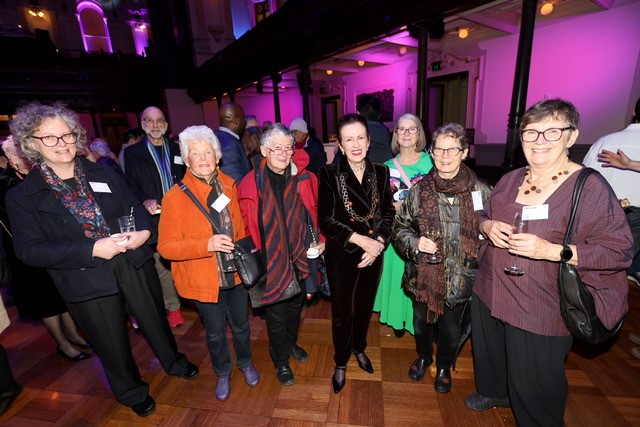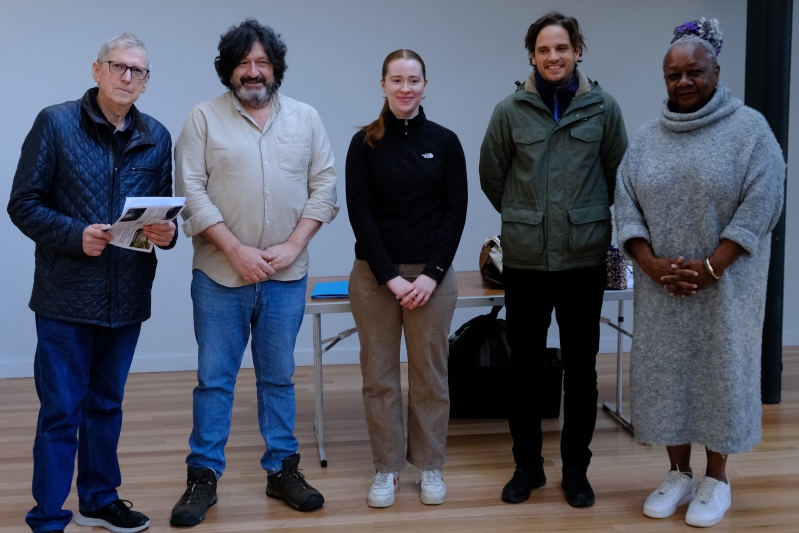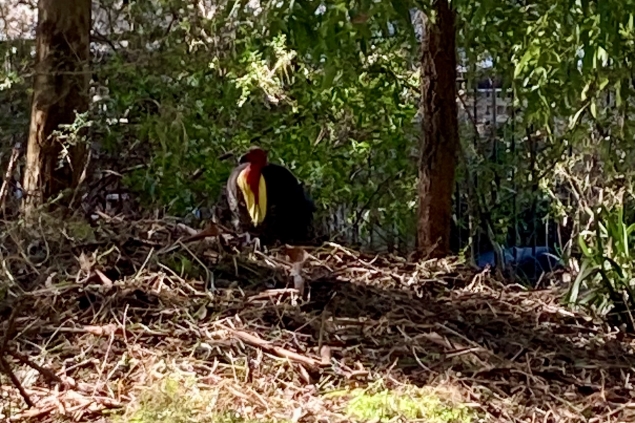By Andrew Wood, Convenor, Bulletin 7/2024, September
Bushcare volunteers recognised
Volunteers from the Orphan School Creek Bushcare Group, led by Judy Christie, were the guests of Clover Moore, the Lord Mayor, at a Volunteers Thank You Event held at Sydney Town Hall on 3 July 2024.

Innovation and Ideas Grant Walkshop
At 2 pm on Sunday 28 July in the Community Meeting Room at the Tramsheds, the University of Sydney presented a Walkshop detailing their research progress on the Innovation and Ideas Grant (Glebe’s Hill – unravelling its biodiversity secrets and potential). The following report was written by Helen Randerson, a member of the Subcommittee.
Professor Dieter Hochuli, Ms Genevieve Heggarty and Dr Manuel Lequerica Tamara from the School of Life and Environmental Sciences at Sydney University presented their interim findings, fielded questions and later led a walk around the Hill via Jubilee Park and the Johnstons Creek wetlands.
Walkshop: Exploring Glebe’s Wild Spaces: The Fauna and Flora of the Hill and Johnstons Creek revealed
On 28 July, 55 Glebe locals gathered at the Tramsheds to learn the secrets of Glebe’s Hill, a small area of contaminated, degraded land nearby that has been closed to the public for over 20 years. We were welcomed to the Walkshop by our President Duncan Leys and Councillor Emelda Davis on behalf of the Lord Mayor before being shown the results of camera sightings and interpretations of the Glebe’s Hill research project, which is being conducted by the University of Sydney in collaboration with the Glebe Society and funded by the City of Sydney.

The cameras installed on Glebe’s Hill have revealed that a range of ‘wildlife’ exists there that thrives in a mix of weedy vegetation – and all this is in a former rubbish dump! The researchers explained that by understanding how the site is currently being used, we can better identify opportunities to enhance its ecological/biodiversity values for the future.
Although sadly, no blue wrens have been sighted by the cameras to date, life on the site has been varied. It includes foxes, free-roaming cats, rats, a brushtail possum, small birds such as silvereyes and fantails, common noisy miners and pied currawongs, as well as humans who have strayed onto the site bringing milk crates for seating – and even one person walking a dog through the site. (Formerly, there was public access through the site via a narrow path [public road] on the side of the Hill.)
The vegetation on Glebe’s Hill currently includes large trees (primarily Celtis and palms) as well as some lantana, which is enjoyed by small birds, and a range of smaller weedy plants.
The researchers have not considered Glebe’s Hill in isolation from other surrounding sites (e.g. Jubilee Park and Johnstons Creek) as there are inter-relationships and some may form important ‘stepping stone’ sites for certain species.
After the walk, we were invited to consider our future biodiversity priorities and preferences for Glebe’s Hill, including: superb fairy wrens breeding on site, native plants replacing exotic plants, pollinator gardens and meadows, creating habitat for native reptiles, creating habitat for small birds, powerful owls roosting on site, nest boxes for birds and bats, First Nations practices and perspectives, bee hotels for native bees, places to sit and watch nature – and other options for replanting contaminated land for urban nature. We also enjoyed an afternoon tea.

Updates from the Orphan School Creek bushcare volunteers

Judy Christie reports that the Orphan School Creek Bushcare Group had an interesting working bee on Saturday 17 August. The Group work in the fenced-off habitat area known as the Wood Street Lands (Wood St Forest Lodge) and their task of weeding is now being assisted by a male Brush-Turkey who has been scraping up grass and leaves, building his mound, for the last few weeks. On Saturday he had two female Brush-Turkeys inspecting the condition of his mound (where they could lay their eggs), not the least distracted by an audience. It is pleasing that the Brush-Turkeys have found a suitable place to call home. Visitors welcome. During our morning tea we also spotted a Tawny Frogmouth roosting nearby, concluding a satisfying morning’s work in the bush.
What Bird is That? – Bird Walkshop on Sunday 8 September 2024
In a further activity associated with the Society’s Innovation and Ideas Grant, Judy Christie will lead an interpretative walk along Johnstons Creek. Judy will give an introduction to the local birds and the Walkshop will also prepare those interested in helping with the Society’s 11th Annual Spring Bird Survey on Sunday 3 November.
Participants will meet Judy at 9.45 am at the start of Orphan School Creek Reserve next to the pedestrian crossing on Wigram Road. The walk will take about one hour, ending near the Rozelle Bay mangroves. This route has a range of habitat areas where birds have previously nested or been observed in the waterways. A map of the walk with likely bird species will be provided. Bookings should be made via Eventbrite, and the number of attendees is limited to 25. There is no charge for the event.








There are no comments yet. Please leave yours.